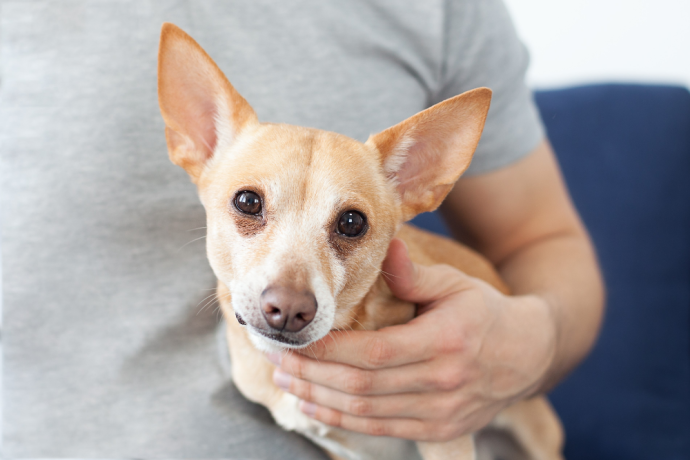Can Dogs Eat Mango? Can Dogs Eat Mango Skin?
Written by:
Author: Vicki Smirnova
Vicki Smirnova is a professional writer and editor who adores animals and helps readers get along well with their pets. She has been working in digital media for more than 5 years and has great experience writing content about lifestyle, including pets. Vicki specializes in dog health and nutrition, cat feeding, dog training. She is an aquarium lover and is passionate to write about fish care at home. Also, Vicki headed several websites and worked as a news editor.
View all 244 articlesLearn about our editorial process and veterinary review board.
Reviewed by:
Veterinary review
by Dr. Linda Simon
Dr. Linda Simon is a veterinary surgeon working with seven years of experience. She is a fellow of the British Veterinary Association and specializing in animal medicine. Also, she has been the Woman magazine resident vet for the past two years and writes a regular column for them, focusing on pets and their health.
View all 30 articlesLearn about our veterinary review board
Viewed: 85
Updated on: 08/15/2022
People love mangoes for their amazing aroma and sweet taste. Mango contains many useful vitamins and minerals. Most dogs love mangoes too. But the human body differs from the animal body, so it is important to know what can and cannot be given to a dog.
Is mango good for dogs?
One fruit that can safely for part of your dog’s diet is mango. This healthy and natural snack is great for dogs in moderation. Mango contains antioxidants and many vitamins that can benefit the dog’s body. It is recommended to feed your pet with a limited amount of mangoes because the fruit contains a lot of sugar and dietary fiber, and some dogs may not be able to cope with this.
If you have doubts about the safety of your pet eating exotic fruits, remember they do not need to be given and dogs can remain perfectly healthy with no fruit in their diet. However, in moderation, fruit can offer some benefits.
- Apples are rich in vitamin C, improve digestion, clean plaque from teeth and freshen breath. Large breeds can be given half an apple, and small breeds are given a quarter once or twice weekly. Do not feed the pips.
- Melons may help with mild constipation and quench thirst. They contain beta-carotene, fiber and vitamins A, C, E, B1, B2, B3, B5, B6, and B9.
- Bananas can be provided in small amounts. They contain large amounts of potassium. Large dogs can take one banana a week. Overripe bananas are not recommended.
- Pears contain copper, vitamin C, vitamin K, and fiber.
- Watermelon contains potassium and vitamins A, B1, B2, B3, B6, B9, C, E. Also, it perfectly quenches thirst thanks to its very high water content. Dogs can be given watermelon once we have removed the seeds and skin.
- Papaya pulp is suitable for dogs that do not suffer from diabetes. Papaya contains beta-carotene, retinol, ascorbic acid, thiamine, riboflavin, pantothenic acid, pyridoxine, folic acid, and nicotinic acid, tocopherol, phylloquinone, and choline.
If your pet experience any allergic reactions or an upset stomach, you should contact your veterinarian. You must start with small portions when introducing new fruits into an animal’s diet.
Health Benefits of Mango
Mango can be given to a dog in small quantities. The fruit’s pulp is relatively safe for the animal’s health, but overeating can result in an intestinal upset.
Mango provides many benefits:
- vitamin A, which is responsible for maintaining vision, kidney function, immunity, growth and fertility;
- vitamins of group B, which are responsible for tissue regeneration, the functioning of the nervous system and heart, skin condition, bowel and stomach function;
- vitamin C helps boost immunity and has anti-inflammatory properties. Also aid in the healing of the skin tendons, bones, cartilage, and connective tissue;
- vitamin E, which is responsible for promoting healthy skin, protecting the body from toxins, and the production of active spermatozoa;
- potassium, necessary for the proper functioning of muscles and nerves;
- phosphorus, important for metabolism;
- calcium to support bone growth;
- magnesium to maintain energy at the cellular level;
- sodium is involved in metabolism.
Mango fruits also help to improve digestion and restore the gastric mucosa.
Hazards to Feeding Your Dog Mango
Mango pulp cannot cause serious harm if you do not overfeed the dog with fruit. Allergic reactions are possible on an individual basis but would be very rare.
The fruit pit and peel are harmful to both humans and animals. They can potentially cause a gut obstruction. Therefore, before eating, you need to peel and de-pit the fruit. It is important to remember that mangoes are high in sugar and can lead to diarrhea.
READ MORE: Is Spinach Good for Dogs?
How to Feed Mangos to Dogs
Fruit is not the main source of nutrition but a healthy treat. The number of pieces depends on the size of the dog and its desire. There are no bans on the use of mangoes for certain breeds. Only portion sizes are regulated. Dogs of large breeds can eat a whole de-pitted mango and pet of small and dwarf breeds – a small piece of fruit. If a dog doesn’t want to eat mango, don’t force it. It is not needed for a balanced diet.
If fed a balanced diet, your dog does not need fruit, but they may be partial to a small amount every now and then because it tastes nice.
Dr. Linda Simon
If you treat your pet for the first time – give a small piece and watch the reaction for the next few days. Whether to mix mango with food or give it in its pure form remains at the discretion of the owner and his tailed friend. There are no set rules.
When buying a mango, you should consider its appearance and smell. You should not buy fruit if it is damaged and oozing; has a putrid or chemical smell.
If your dog ate a lot of mangoes without your knowledge, there is no need to panic. Watch the dog. As a rule, nothing bad happens. But, if your pet’s health has worsened, you need to contact the veterinarian, and supportive care can be provided.
With excessive overeating of mango, the following side effects may occur:
- vomiting;
- diarrhea;
- constipation;
- abdominal swelling;
- lethargy.
If you notice any of these signs, you need to seek veterinary help.
Manifestations of an allergic reaction can be observed even if the dog has tried an exotic fruit for the first time. Signs of an allergic reaction include swelling of the face, hives, breathing difficulty and collapse. In case of a hypersensitivity reaction, you should seek immediate vet care, including adrenaline, steroids, fluids, oxygen and anti-histamines. Subsequently, the dog should never be given mango again.
How Much Mango Can My Dog Eat?
Veterinarians do not restrict feeding mangoes to pets except for those with obesity or diabetes. Fruit can be given to older puppies and pregnant and lactating females. It is best to accustom dogs to them in puppyhood.
Pets should be given treats following the following rules:
- the total calorie content of such treats should not exceed 1/10 of the daily food intake;
- you can give mangoes in small pieces as a reward or mix fruits with cereals and vegetable stews.
Overeating mango can lead to diarrhea or indigestion.
Proper nutrition for your dog will reduce the likelihood of bone, joint, and ligament problems. Also, the right diet allows you to control the dog’s body weight, which contributes to the health of the heart and lungs. Excessive consumption of human food can lead to problems with the health of the liver and other organs.
Mango Recipes for Dogs
As a treat for your animal, you can make mango ice cream. Freeze 2 sliced unripe bananas and 1 diced mango until firm, at least 4 hours. Blend in a food processor until thick and smooth, 3 to 5 minutes. Sprinkle with chopped mango.
RELATED: Can Dogs Eat Sour Cream?
People also ask:
How much mango can a dog eat in a day?
The total calorie content of mango treats should not exceed 1/10 of the daily food intake. You can give mangoes in small pieces as a reward or mix fruits with cereals and vegetable stews.
Can dogs eat mango peels?
No, pets are not advised to eat either the pit or the peel. They are not easily digested and could cause an obstruction.
What fruits can dogs eat?
Dogs can eat a variety of fruits, including pineapples, apples, melons, mangoes, watermelons, pears and bananas.
 Dog Veterinary Tips Why is my Dog throwing up: Causes and Preventing (Veterinary Advice)
Dog Veterinary Tips Why is my Dog throwing up: Causes and Preventing (Veterinary Advice) - 23424
- 5
 Dog Care Why Is My Dog Bleeding From Its Butt? Causes and treatment of rectal bleeding in the dog
Dog Care Why Is My Dog Bleeding From Its Butt? Causes and treatment of rectal bleeding in the dog - 22076
- 0
 Dog Care My Dog Keeps Scratching His Mouth: Reasons Why Your Dog Scratching Face
Dog Care My Dog Keeps Scratching His Mouth: Reasons Why Your Dog Scratching Face - 17561
- 1

























